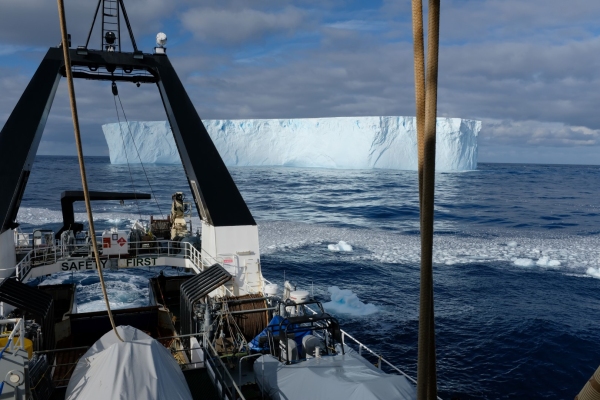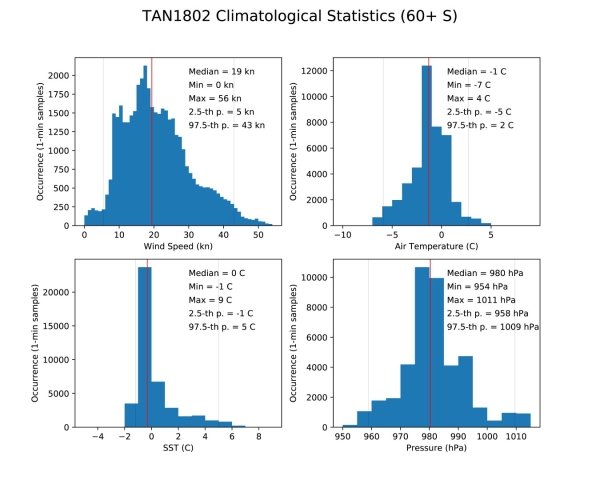Today we left the area south of 60°S and have started the five-day return journey to New Zealand. While the main sampling objectives are now finished, we still have the Continuous Plankton Recorder, a few weather balloons, and some underway seawater filtering to complete on our way home.
By way of summary, in the Ross Sea Dependency we have collected, deployed, or observed:
- 11,000 L of seawater with the CTD (instrument to measure Conductivity, Temperature, and pressure at Depth)
- 7,200 still images and 30 hours video of the seafloor
- 124 jars of preserved specimens to be taken back to the NIWA Invertebrate Collection
- 72 balloons to collect atmospheric data
- 68 groups of 6 different species of whales
- 25 zooplankton samples from 0–200 m deep using the bongo net.
- 12 samples of mesopelagic fauna using the Rectangular Midwater Trawl
- 12 Argo floats, 10 meterological drifters, and 9 wave drifters
- 3 oceanographic moorings for the Ross Outflow Experiment
- 3 passive acoustic moorings to record whale vocalisations
- 1 active acoustic mooring to measure krill and other mesopelagic fauna.
There is some heavy weather expected in the next couple of days, and the teams now have the task of packing up all their equipment, cleaning up their workstations, and beginning the paperwork required for importing samples back into New Zealand. Please wish us luck!
Some of things our blog writers have been missing from home and are looking forward to: Family, freedom, sailing, a big bed, good coffee, red wine, silence, stillness, being barefoot in summer, a cold beer at the end of the day, the smell of wet earth and grass, trees, open spaces, soccer on grass, the sound of a happy tūī, a proper shower, bike rides around the peninsula, walking in the bush, swimming in the ocean, sitting on the waterfront on a sunny day…
Thank you to everyone who has been following along with our expedition.



